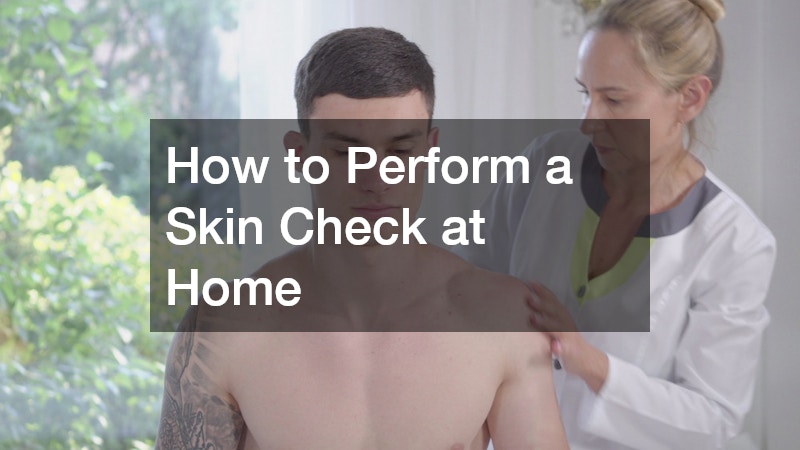Why Regular Skin Evaluations Matter
Skin cancer, including melanoma, squamous cell carcinoma and basal cell carcinoma, can develop anywhere on the body—not just areas exposed to the sun. Performing a monthly check at home can help you become familiar with your skin’s normal patterns, making it easier to notice new spots or changes to existing moles.
This proactive habit could save your life.
What You’ll Need
Before you start your at-home skin inspection, gather the following items:
- A full-length mirror
- A handheld mirror
- A well-lit room, preferably with natural light
- A stool or chair
- A notepad or smartphone to record any findings
It’s helpful to have a partner or family member assist, especially for hard-to-see areas such as your back and scalp.
Step-by-Step Skin Inspection Guide
1. Start with the Face and Scalp
Begin by examining your face, including the nose, lips, mouth and ears (front and back). Use a comb or hairdryer to part your hair and check your scalp thoroughly. If you have thick or long hair, ask someone to help you inspect the scalp under different lighting angles.
2. Check the Upper Body
Inspect your neck, chest and torso. Women should lift their breasts to examine the skin underneath. Don’t forget the sides of your body, including the underarms and upper arms.
3. Examine Your Hands and Arms
Look at the tops and palms of your hands, in between your fingers and under your fingernails. Continue up the wrists, forearms and elbows. Use the mirror to inspect both the inner and outer sides.
4. Scan the Lower Body
Sit down to check your legs, front and back. Look at the tops of your thighs, knees, calves and shins. Don’t overlook your feet, including soles, between your toes and under your toenails.
5. Use a Mirror for Hard-to-See Areas
Stand with your back to a full-length mirror and use a handheld mirror to check your back, buttocks and the backs of your legs. Use the same method to examine your genital area and around the anus.
What to Look For
When performing a skin analysis at home, keep an eye out for the ABCDE signs of melanoma:
- A – Asymmetry: One half of the mole doesn’t match the other.
- B – Border: Edges are irregular, ragged or blurred.
- C – Colour: Multiple colours such as brown, black, red, white or blue.
- D – Diameter: Spots larger than 6 mm across (about the size of a pencil eraser).
- E – Evolving: Any change in size, shape, colour or elevation—or new symptoms such as bleeding, itching or crusting.
Also be aware of any new growths, sores that don’t heal or spots that look different from others (the ‘ugly duckling’ rule). While not all changes indicate skin cancer, any concern should be assessed by a healthcare professional.
How to Record & Monitor Changes
Document any moles or marks you’re unsure about by taking clear, close-up photos with your smartphone. Note the date and description of the spot (location, size, colour) in a journal or digital app. Compare these photos monthly to track changes over time. If a spot looks suspicious or has changed between checks, make an appointment with your GP or dermatologist.
When to See a Professional
If you find a mole or spot that concerns you, don’t delay. Schedule an appointment with a medical professional for further evaluation. You should also book an annual professional skin check, particularly if you have risk factors such as:
- Fair skin or freckles
- A history of sunburn or tanning bed use
- A family history of skin cancer
- A high number of moles
- A weakened immune system
Your doctor may use tools like dermatoscopes or recommend a biopsy if they find anything unusual.
Tips for Preventing Skin Cancer

Prevention is as important as detection. To reduce your skin cancer risk:
- Apply broad-spectrum SPF 50+ sunscreen every day
- Wear protective clothing, hats and sunglasses
- Seek shade during peak UV hours (10 am–3 pm)
- Avoid solariums and tanning beds
Performing a skin check at home is simple, effective and can be life-saving. By becoming familiar with your skin’s normal state and conducting monthly checks, you increase your chances of catching abnormalities early. Combine at-home checks with regular professional assessments and smart sun safety practices to protect your skin for life.



